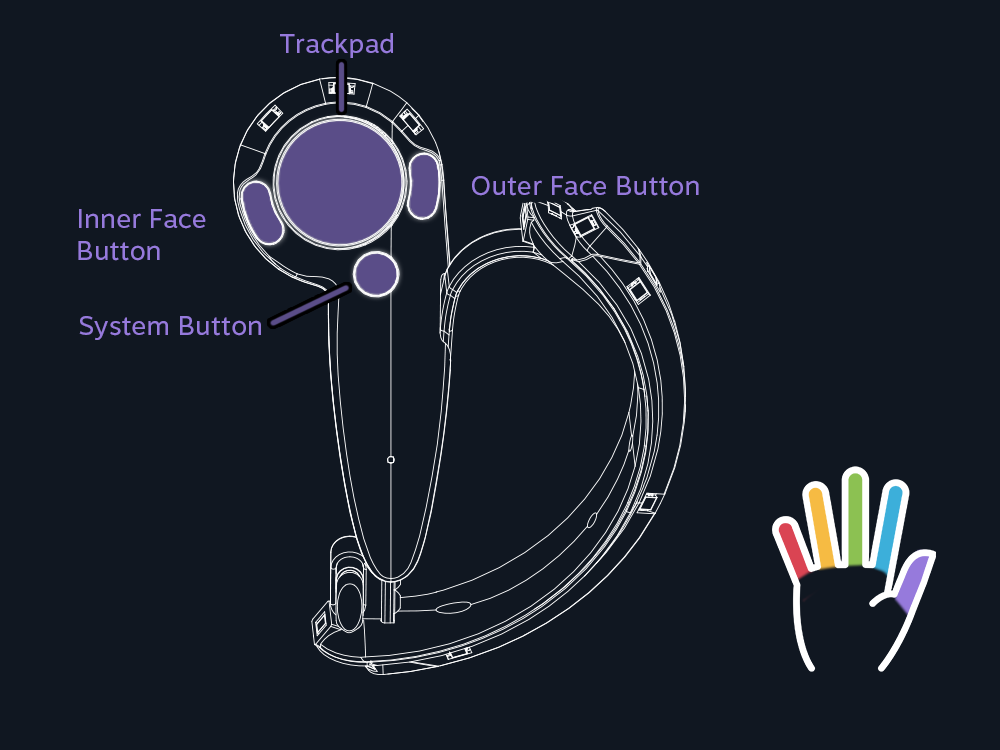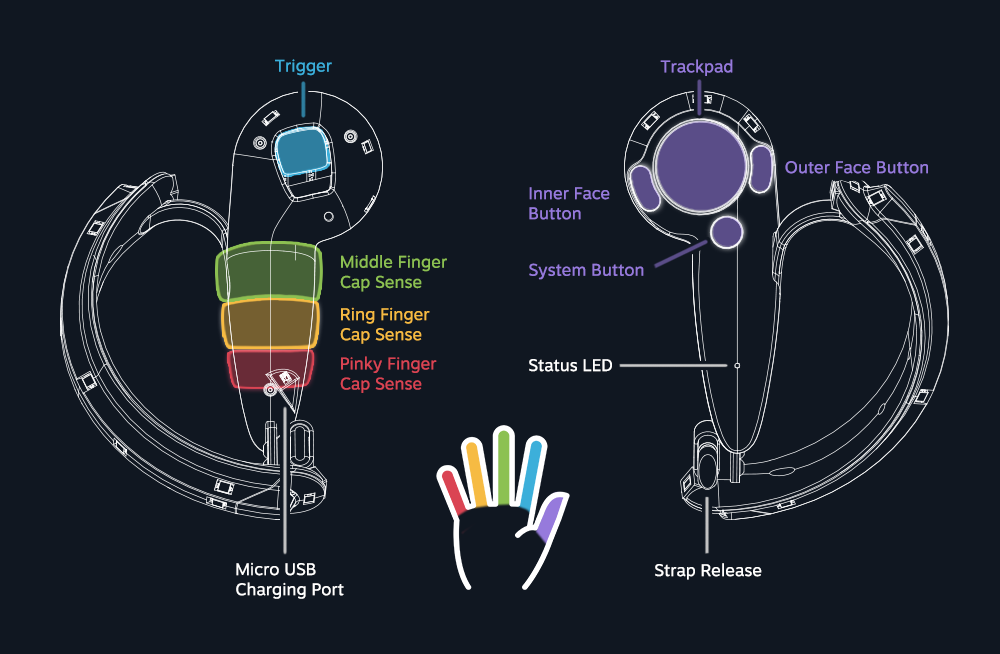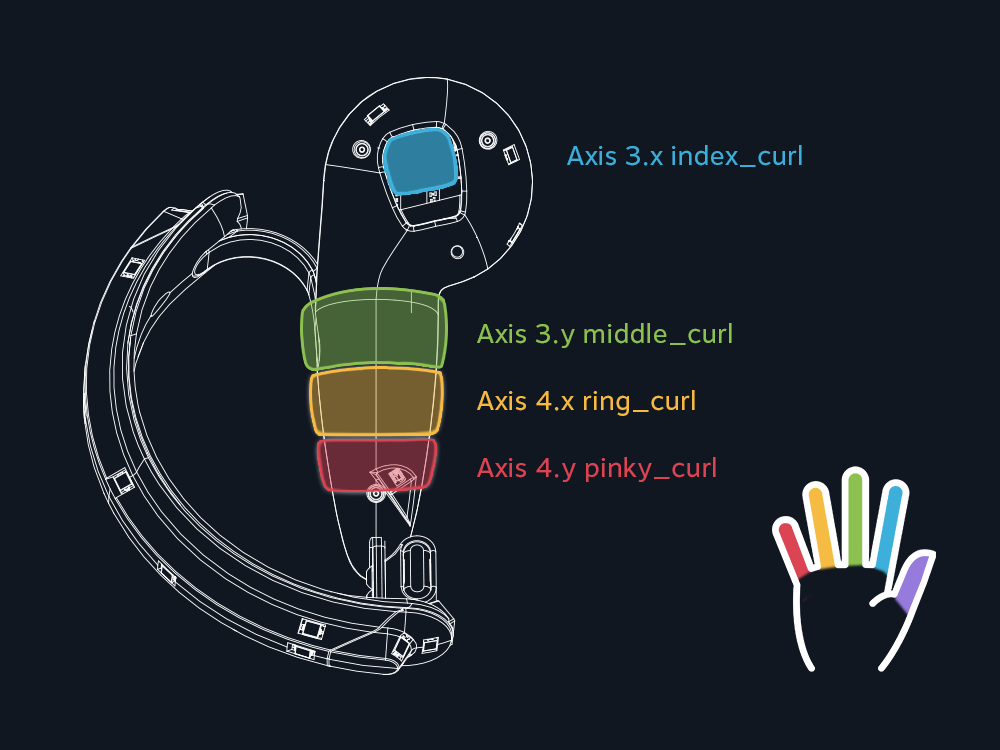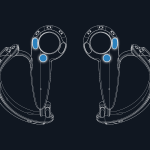Links on VR Source may earn us a commission, Learn more.
Effective interaction is essential to make virtual reality believable. When you’re visually immersed by the world you’re thrown into in VR, the only other thing to complement that is the way you interact with your hands. As we’ve seen from the HTC Vive, its motion controllers were crucial in separating itself from other VR solutions, but as time went by, it was surpassed by the Oculus Rift’s Touch controllers, which brought on an addition element of interaction that has yet to me matched on a broader scale.
Fine motor skills are difficult to simulate in the virtual world, mainly due to the fact that vast sensors would be needed to track motions of all kinds from our hands. While the Oculus Touch controllers do a magnificent job with the interaction, it still doesn’t achieve the kind of tracking that’s essential to make it feel as though our hands are truly free and independent. Well, HTC Vive intends on benefiting from a new pair of controllers for the VR system courtesy of Valve.
Table of Contents
HTC Vive Knuckle controller – Ergonomics is the first step
Valve’s prototype ‘Knuckles’ VR controller for the HTC Vive is already in the possession of many developers as we speak, but we hope it won’t be long before they’re officially introduced as a final product for consumers. What sets this apart from the existing motion controllers for the Vive is its focus on ergonomics. By just looking at some of the design schematics, one can observe that the VR controllers are fastened over the knuckles – whereby it’s able to maintain its position without having the user to physically grasp the main portion of the controller.
Now this is new and different from the Oculus Touch’s implementation, seeing that you’re still technically grasping onto the controllers at all times. With Valve’s implementation, though, it bears in mind the ergonomics of the controllers first and foremost, allowing the controller to appear suspended without the user actually holding or grasping onto them.

HTC Vive Knuckle controller – Your hands can now ‘feel’ free
This is goes a long way because with the existing pair of motion controllers for the HTC Vive, it’s nearly impossible to seamlessly grab an object in the virtual world. Due to the fact that you’re constantly grasping onto the Vive motion controllers with your hands, you have to rely on those grip buttons instead, which of course doesn’t make for a natural response because you’re still grasping onto something.
Since the ‘knuckles’ controller sits idly on your hand, it’s better able to achieve that grasping motion when actually have to perform that movement in the VR world. And when you’re done with that, you can simply let go without fear about the controller falling or something. This sense of freedom will really help to achieve a more natural response with various movements. Take for instance putting your hand on a steering wheel to drive a car, while your other hand is used to open the driver’s side door and fire a weapon at someone pursuing you.

HTC Vive Knuckle controller – Independent digit response
Looking further into the control schematics for the ‘knuckles’ motion controller by Valve, you can see that the index finger wraps around the controller to meet the trigger on the back – while your thumb can rest over the touch sensitive trackpad (just like on the existing Vive controller). Adding more range than other comparable motion controllers, there are capacitive sensors positioned all along the chassis to track individual digit response – so that’s your middle, ring, and pinky fingers.
These capacitive sensors allow for a host of other new motion responses that aren’t permitted with the existing motion controllers. So maybe in the VR world, you can better simulate a pointing motion with your index finger, just because the other fingers would be resting along those capacitive sensor. And obviously, this will help to achieve other ranges of motion without having to physically be required to push or press on something – whether it be a button or trigger of some sort.

HTC Vive Knuckle controller – Taking it to the next level
The introduction of these new HTC Knuckle controllers will undeniably reshape how the HTC Vive will only deepen its VR impressiveness. As of right now, the Oculus Touch controllers continue to reign supreme, offering superior interaction in the VR space over the Vive’s motion controllers. However, that might quickly change once Valve’s ‘knuckles’ controller is tuned to perfection. Indeed, it’ll also be up to developers to expose all of its potentials.
Other aspects that’ll need to be taken into consideration is battery life. Currently, the motion controllers feature rechargeable batteries, which are preferred over the double-A battery that is required to power each individual Oculus Touch controller. Even though wearing a glove of some kind would be the most ideal controller for articulation with our hands, it’s not yet quite feasible to achieve the necessary motions and responses we get from traditional VR controllers right now.
Valve’s very ambitious about its HTC Vive Knuckle controllers, and so are we, but it’ll need to come sooner than later because those Oculus Touch controllers are beginning to widen the gap.

